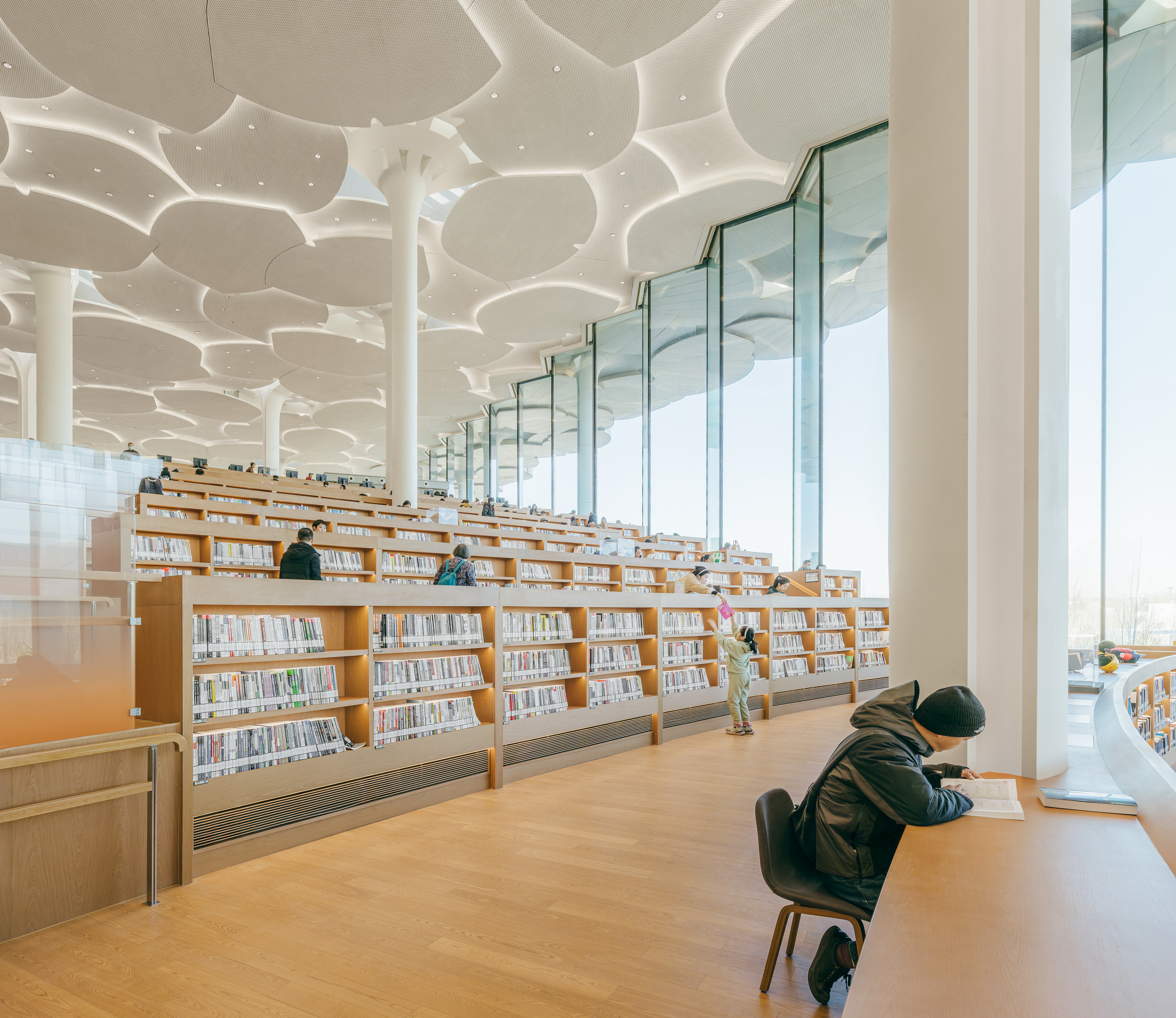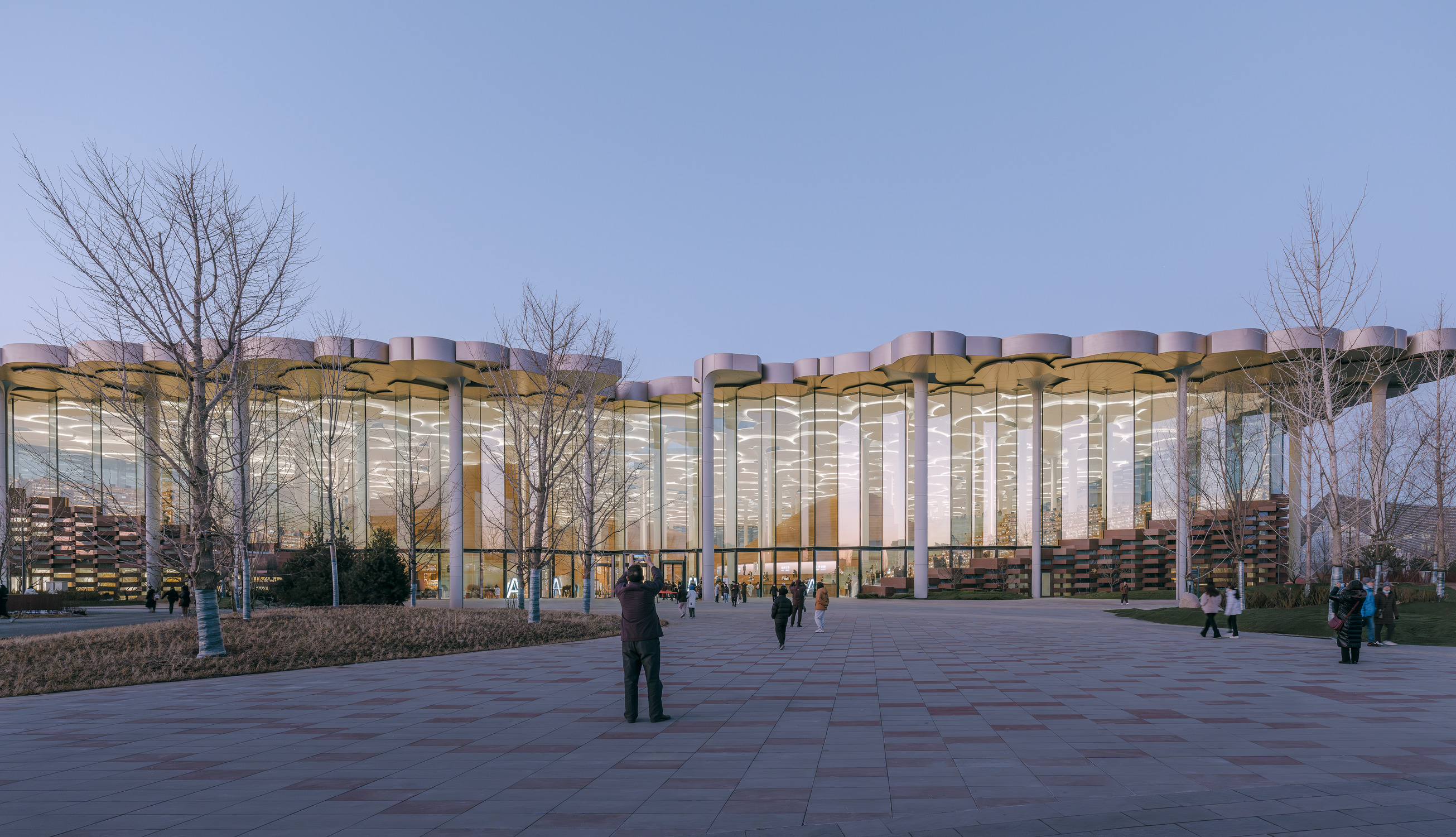
Beijing City Library is a cool slice of serenity within the Chinese capital's Tongzhou District. Designed by Snøhetta, this contemporary take on the library is the world’s largest climatised reading space and celebrates knowledge-sharing.
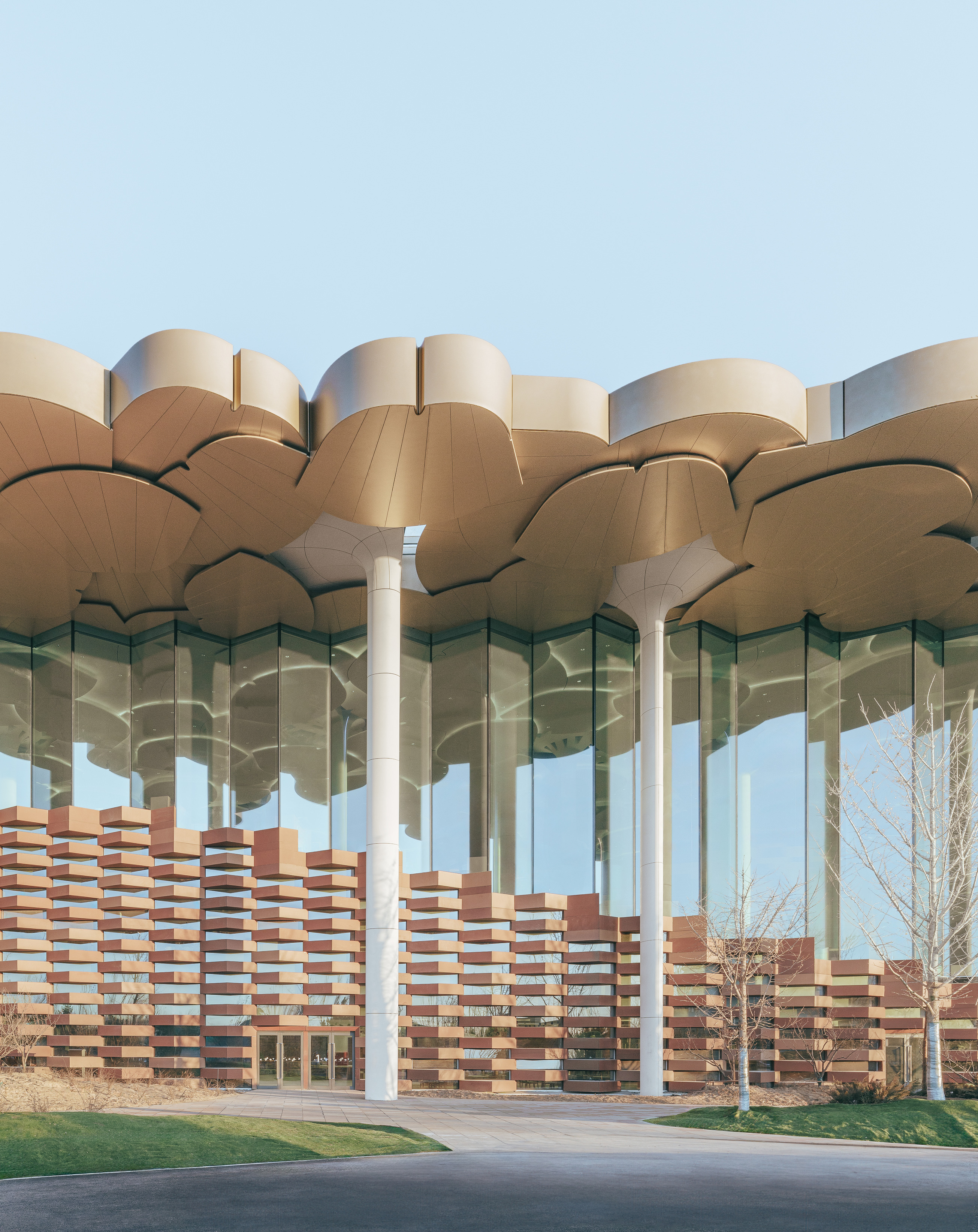
Beijing City Library: a new cultural destination
The Norwegian architecture firm worked alongside local practice ECADI to create the library. Within our current, digital age, libraries have often been disregarded as a dying spatial typology.
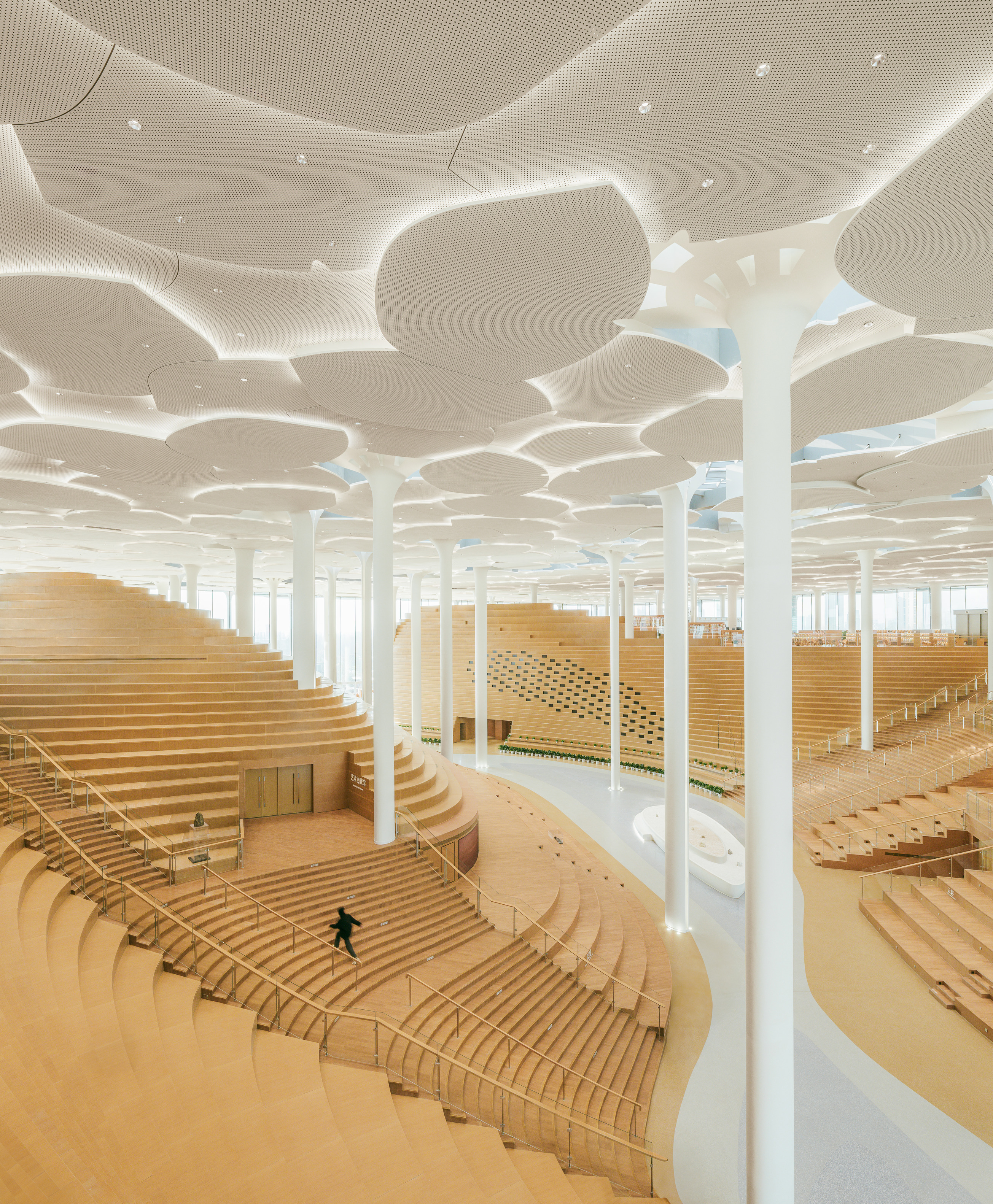
However, according to co-founder and partner at Snøhetta Kjetil Trædal Thorsen, ‘It is the love people have for books that has made libraries survive the digital age and hold new potential to give back more to the city and its public. It is up to us to reinterpret the relationship between body, mind, and the surroundings to rekindle the joy of reading away from the screen. Libraries are here to stay.’
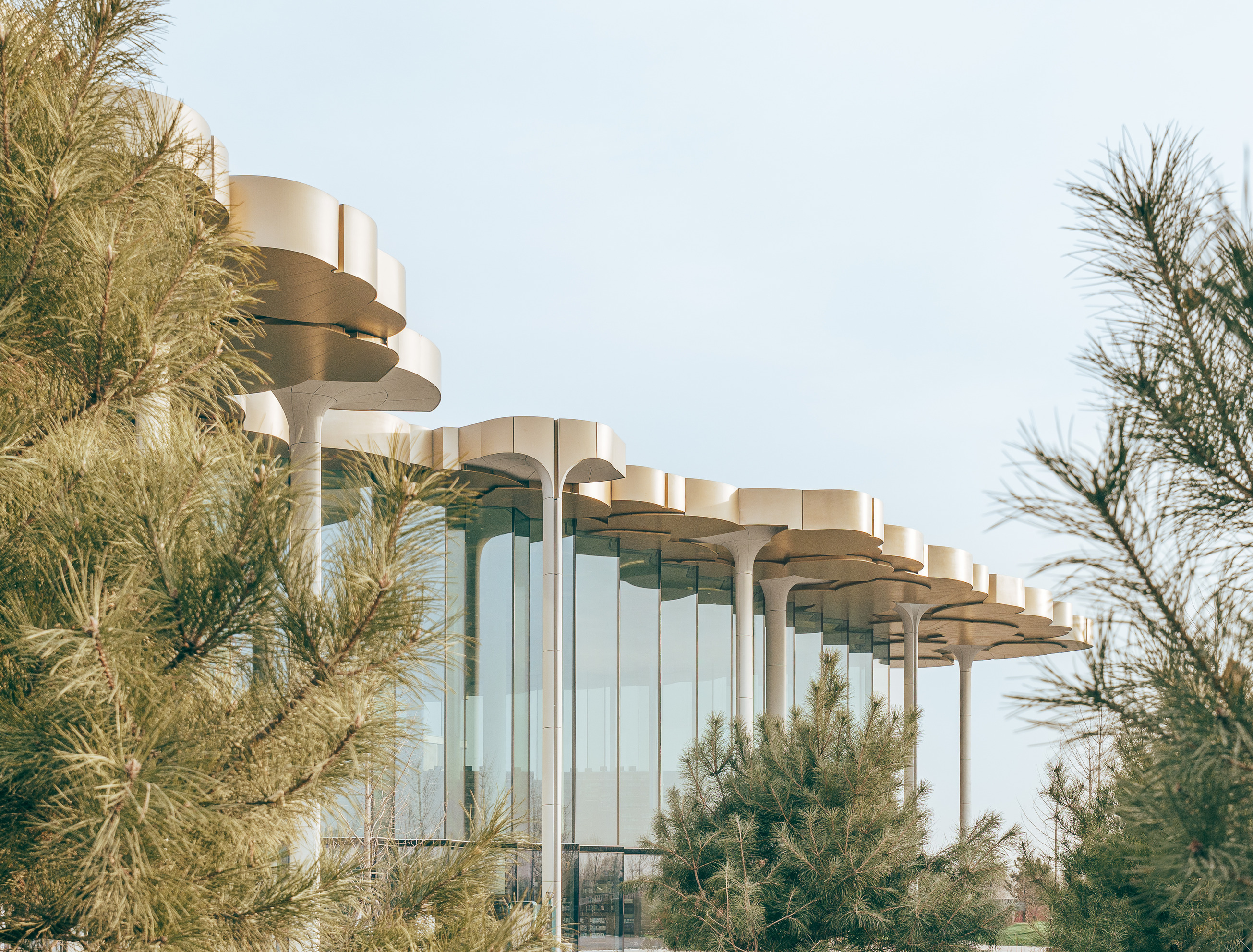
The Beijing City Library is set within a picturesque 'storybook' backdrop, surrounded by trees, hills and views of the Tonghui river. The design, drawing from this context, celebrates a library’s use within the 21st century. The fluid, glass-lined building welcomes a sense of nature into the reading space. Its slender columns expand as they reach the ceiling, emulating the underbelly of lily pads and creating an otherworldly microcosm.
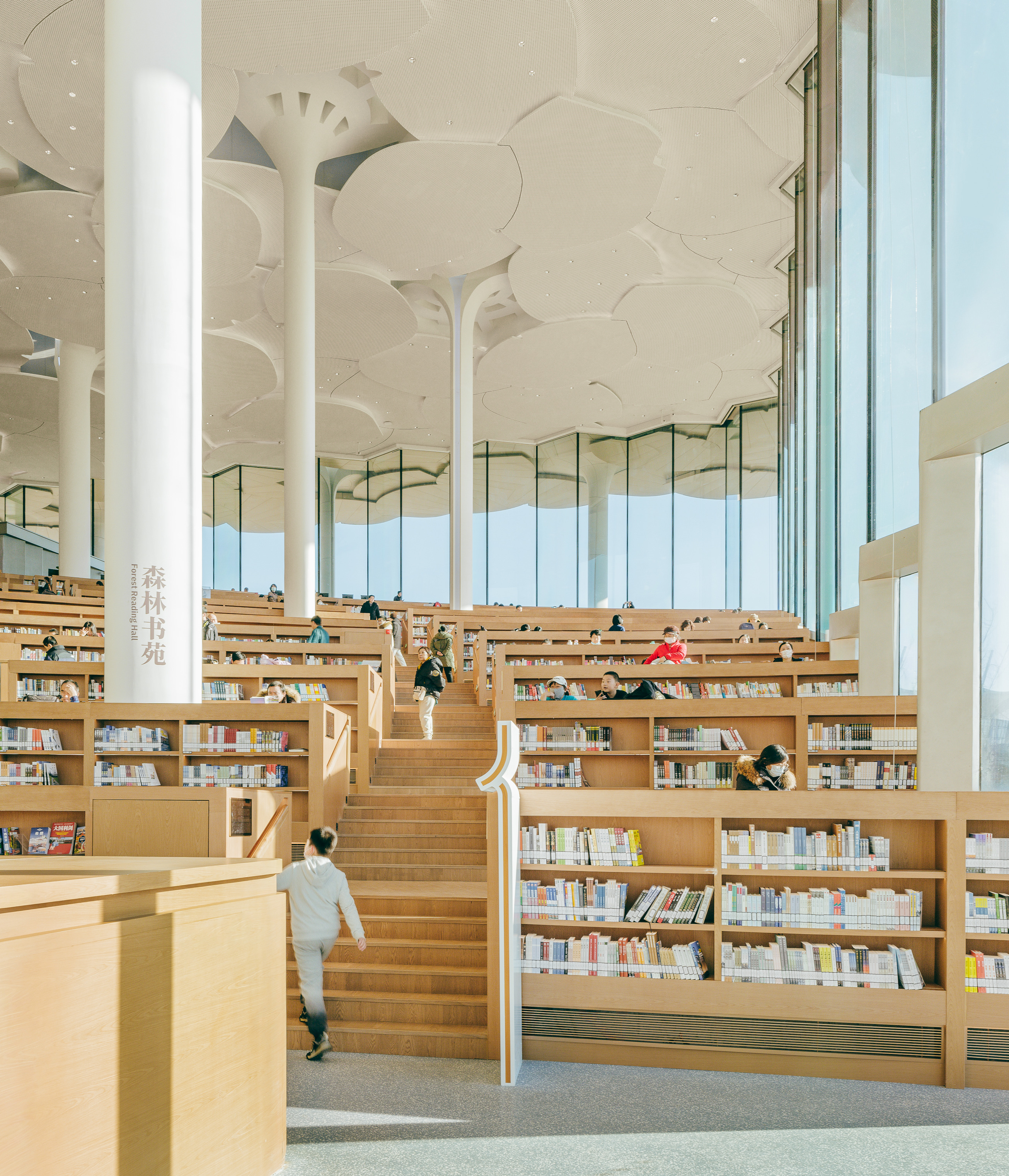
‘The terraced landscape and tree-like columns invite visitors to lift their gaze and focus at a distance, taking in the bigger picture. This is a place where you can be sitting under a tree, reading your favourite book,’ says Robert Greenwood, partner and director of Asia Pacific at Snøhetta. 'The Beijing City Library has an intergenerational quality about it, where you would pass on your stories to children and introduce them to the titles you’ve loved.’
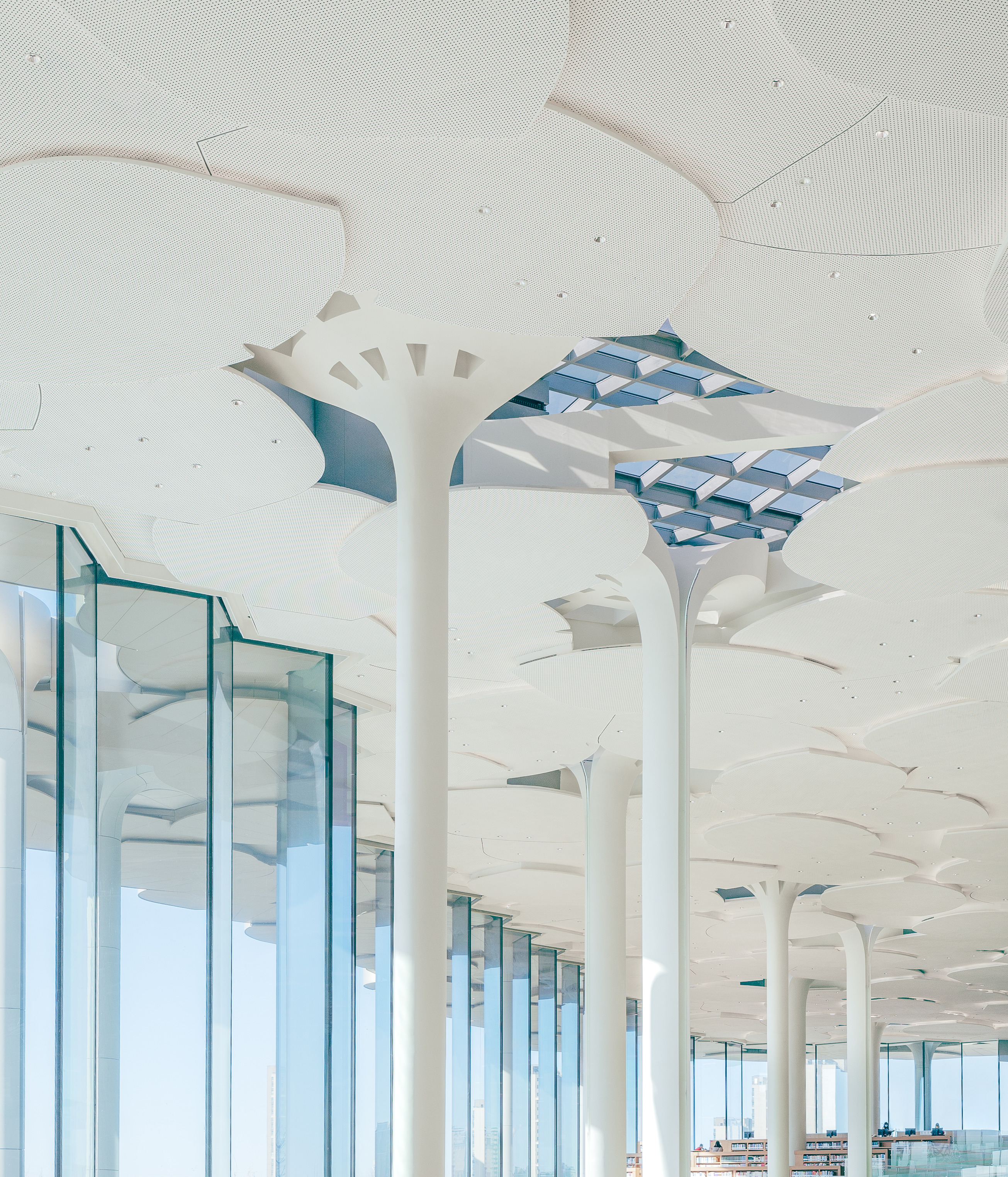
Under the canopy, the 16m tall forum is filled with curvatures that create a sense of movement within the building. A pathway carves its way through the space, providing natural direction between the library’s genres. This area is titled ‘The Valley’, and it replicates the meandering features of the nearby Tonghui river, drawing seamlessly on the library's context.
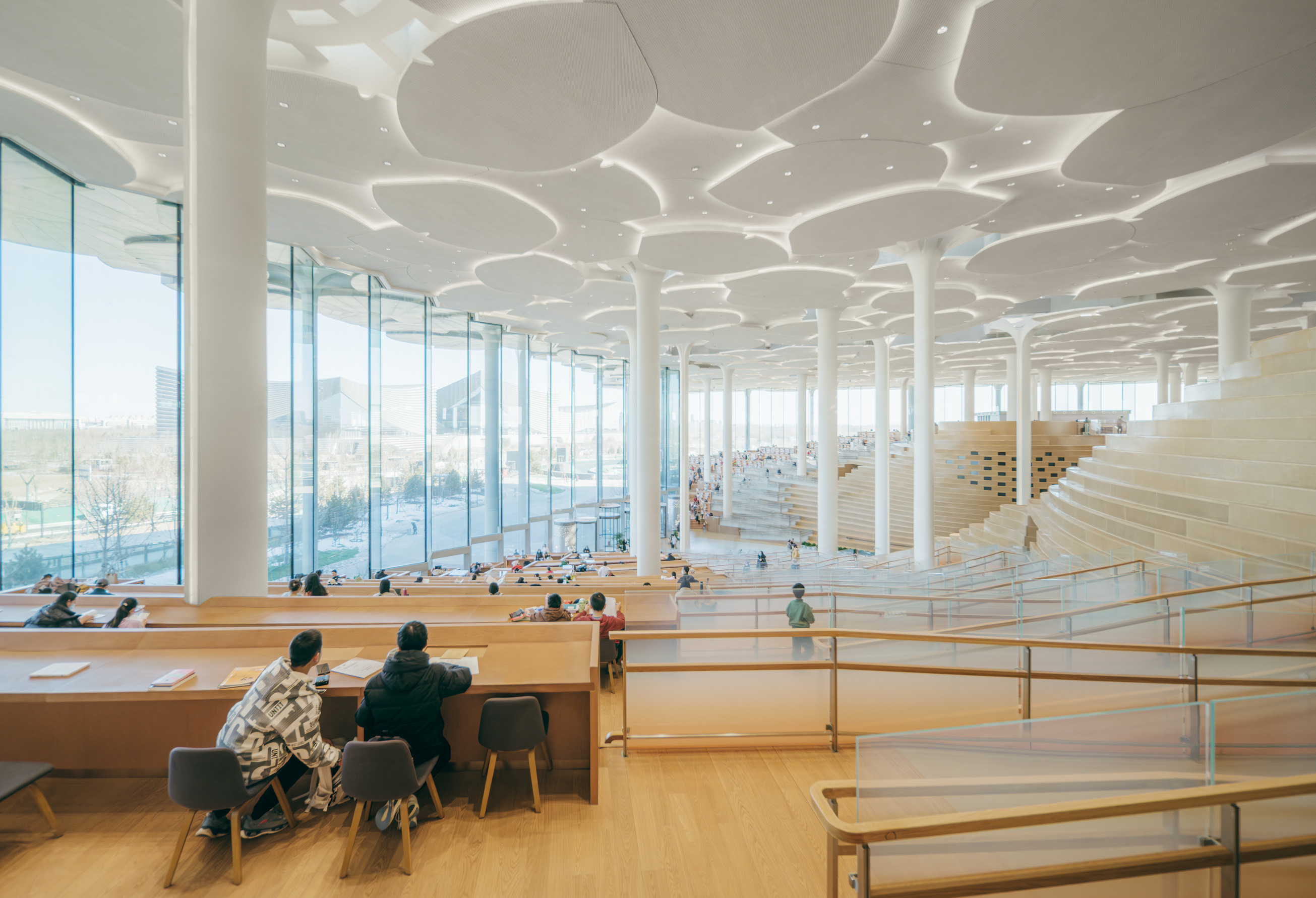
The interior is shaped in harmony with the building's natural hill-like curves, with seating, shelving and an informal zone where visitors can relax and talk. Achieving China’s highest sustainability standard, the building also minimises carbon use by utilising technology to control interior climate, lighting and acoustics. The Beijing City Library is an example of contemporary sustainable architecture that does not compromise creativity.
